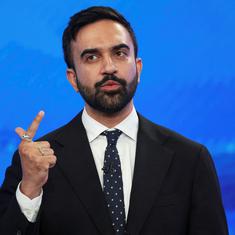In the recent Scroll Adda podcast, public historian Manu S Pillai offered a framing of premodern India: a fragmented cultural space marked by plural power centres, elite accommodations, and loosely connected traditions.
Hinduism, in this account, was not a unified civilisational matrix but an evolving continuum – shaped as much by folk and regional traditions as by Brahmanical orthodoxy. Pillai argues that contemporary efforts to view India’s past through a civilisational or dharmic lens are retrofitted, often ideologically motivated, and historically unsound.
While at one level the complexity is perhaps true, Pillai’s reading reflects and continues a historiographical tendency that treats civilisational coherence with deep suspicion. The implication is that any attempt to connect India’s disparate political and social entities into a broader historical imagination reflects presentist distortion.
Limits of fragmentation
Yet, this refusal to ascribe coherence can also obscure moral and institutional continuities that did, in fact, persist. Precolonial India – despite its fragmented polities – was not devoid of civilisational logic. The endurance of institutions like temple trusts, village assemblies, local jurisprudence and pedagogical traditions points to an underlying moral-political grammar.
These were neither random nor merely symbolic. They drew on dharma as a normative concept: not in a narrow theological sense, but as an ethical and social grammar that informed public life.
Pillai is rightly cautious of simplistic narratives. But his emphasis on hybridity and improvisation occasionally underplays the structural and normative dimensions of premodern institutions. In Rebel Sultans, for instance, the Deccan sultanates are portrayed as cosmopolitan regimes – tactically deploying Hindu imagery and forging local alliances. However, the deeper disjunction between Islamic political theology and dharmic statecraft is never fully explored.
His work challenges simplistic Hindu-Muslim binaries but leaves the ideological tensions between these systems of governance underexplored. And underscoring that Rajputs and Marathas served Islamic courts need not invalidate civilisational memory; rather, it reflects a fractured political landscape where sovereignty and survival were negotiated without a unified self-awareness. The dharma-based worldview persisted in subtle forms, awaiting consolidation amidst colonial disruption and the challenges of modernity.
Thus this tendency to narrate history as a sequence of accommodations and hybridity runs the risk of substituting aesthetic pluralism for ethical inquiry. What gets sidelined is the possibility that premodern or even pre-Islamic Indian society was governed by an enduring framework of moral meaning – even if unevenly practiced, even if politically fractured.
Civilisational coherence does not require a modern nationalist consciousness. It can reside in recurring social forms, metaphysical orientations and institutional memory.
Pillai also suggests that contemporary political mobilisations based on memory – particularly those invoking Hindu identity – are largely distortive. But the deeper question remains: is there a legitimate space for civilisational memory that is ethically grounded and historically plausible?
If modern historiography cannot answer that, it creates a vacuum – ceding the terrain to more shrill or reductive voices. Merely critiquing memory’s misuse is not enough; one must also ask whether there are meaningful ways to recollect, reinterpret and retrieve.
One area where Pillai’s account remains underdeveloped is the ethical dimension of historical narrative itself. His method from what he articulates in the conversation tracks political fluidity and elite performance, but didn’t suggest engagements with the moral economies within which historical actors operated.
So if it were to be contended that dharmic norms, caste orders and legal traditions were merely instruments of power, this is to reduce a layered civilisational archive to political sociology. Would we see dissenters like Buddha Basava, Kabir and Nanak, reject the civilisational space wholesale? They worked within it, critiquing it morally and reshaping it philosophically.
A civilisational method
Furthermore, Pillai’s own admission that liberal historiography has failed to inspire the public ought to invite serious introspection. If professional history cannot move beyond irony or scepticism –if it cannot offer narratives that are ethically resonant as well as empirically grounded, as earlier historians like RC Majumdar, Jadunath Sarkar or KP Jayaswal once attempted through what was effectively a civilisational episteme rather than merely a nationalist one – then it risks forfeiting its place in shaping public imagination.
Their legacy, though far from homogenous, if revisited today through sociological frameworks from Durkheim and Weber to SN Balagangadhara’s critique of colonial consciousness, offer a possible middle path between empirical rigour and civilisational insight – something contemporary liberal historiography continues to resist.
This does not mean ignoring hierarchy, injustice or violence in India’s past. But it does require acknowledging the normative aspirations and metaphysical commitments that underpinned institutions over time. Civilisational thinking need not be exclusionary. It can provide a grammar for coherence, continuity without collapsing into singularity and yet revealing belonging without erasing difference.
RS Krishna is a retired schoolteacher based in Bengaluru. He is the author of India’s Past, Its Learnings, Its Pedagogies: Teacher Meditations on History Textbooks in India.










